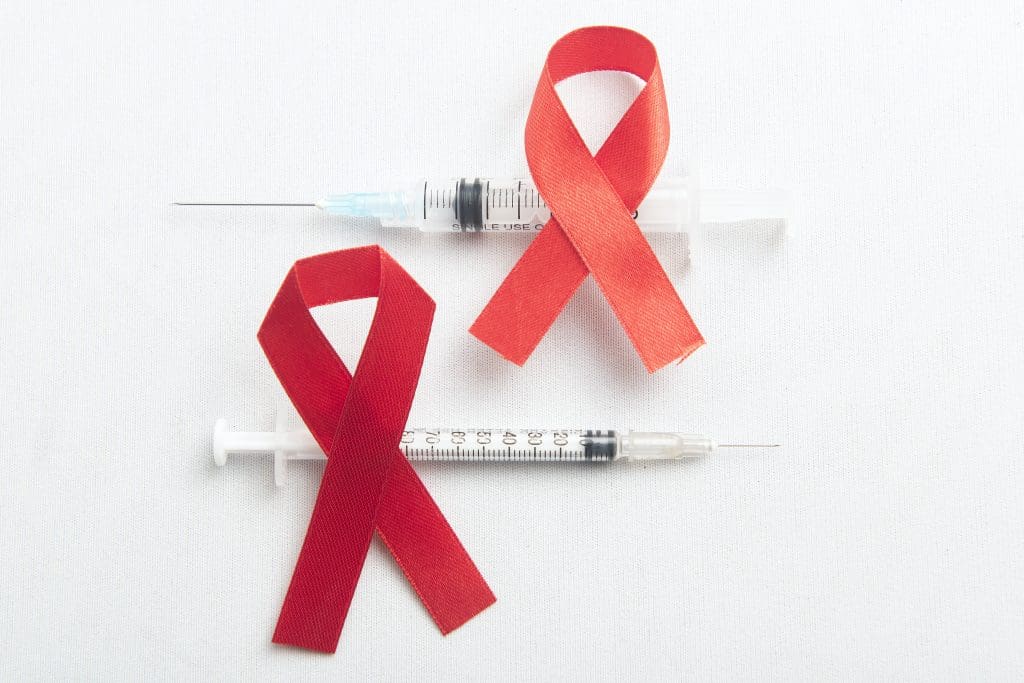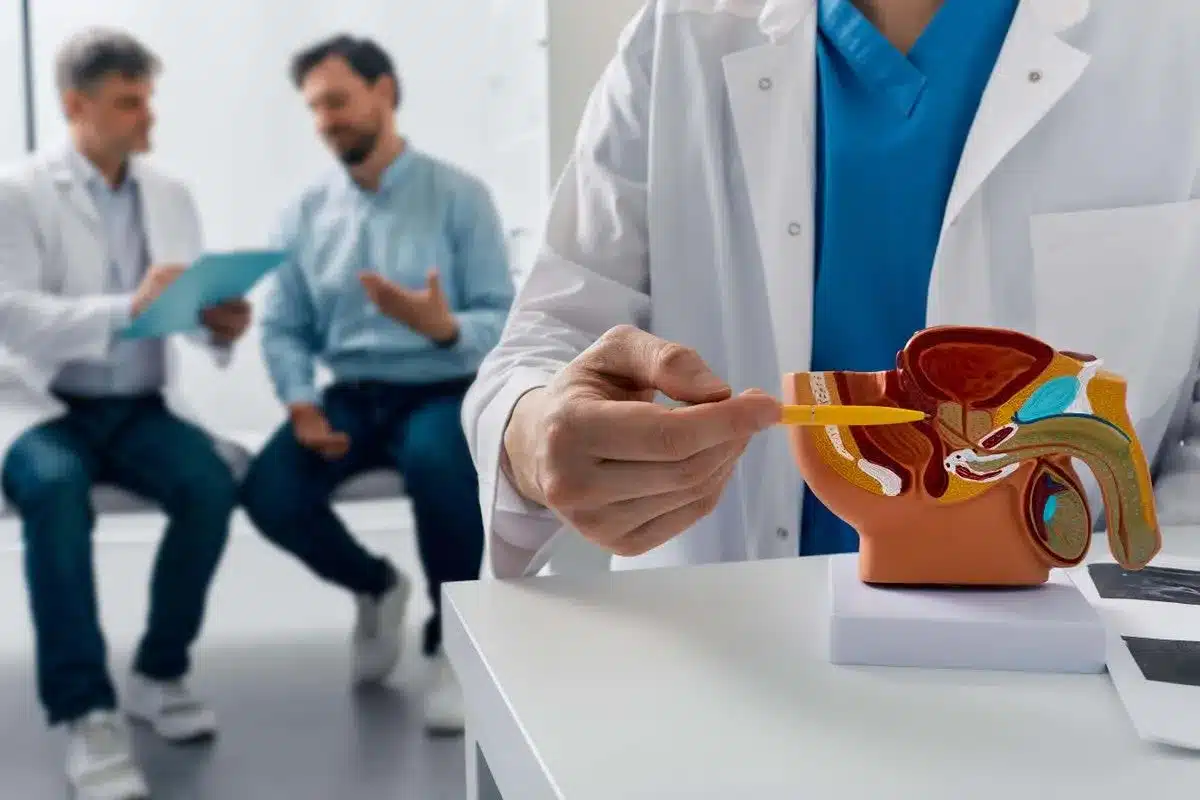Nearly 300,000 children are born with thalassemia major every year worldwide. Managing this condition often involves careful dietary choices. The right low iron diet can significantly impact its management. What food is bad for thalassemia?
Individuals with beta thalassemia minor or other forms of the condition should monitor their diet carefully. Some foods can raise iron levels, which is a problem for those with anemia and thalassemia. By choosing the right foods, individuals can manage their condition better and live a better life.

Key Takeaways
- Understanding the role of diet in managing thalassemia
- Identifying foods that can worsen thalassemia symptoms
- The importance of a low iron diet for thalassemia patients
- Exploring thalassemia remedies through dietary adjustments
- Managing anemia and thalassemia through informed food choices
Understanding Thalassemia and Its Nutritional Implications
thalassemia diet management
People with thalassemia need to pay close attention to their diet. This is because thalassemia affects how the body makes hemoglobin. A good diet is key to managing the condition.
Different Types of Thalassemia and Their Impact on Nutrition
Thalassemia comes in two main types: alpha and beta. Each type affects nutrition differently. For example, those with severe cases might need to watch their iron intake more closely.
| Type of Thalassemia | Nutritional Considerations |
| Alpha Thalassemia | Iron intake management, possible need for folic acid |
| Beta Thalassemia | Monitoring iron, might need vitamin D and calcium |
The Relationship Between Thalassemia and Iron Metabolism
Iron is very important for thalassemia patients. Blood transfusions, a common treatment, can cause too much iron. It’s important to eat foods with the right amount of iron.
Iron Overload Concerns: Too much iron is a big risk for thalassemia patients. Eating the right foods can help avoid this problem.
Why Diet Matters for Thalassemia Management
Diet is very important for thalassemia. It affects iron levels and overall health. A balanced diet can help manage symptoms.
A tailored dietary plan can greatly improve life for thalassemia patients. Working with healthcare providers to create a personalized diet is essential.
The Role of Iron in Thalassemia
iron diet food
Iron plays a key role in managing thalassemia. This genetic disorder affects how the body makes hemoglobin. It’s important to watch how much iron you eat.
Iron Overload: A Major Concern for Thalassemia Patients
Iron overload is a big worry for those with thalassemia. It can cause serious health problems if not handled right. Blood transfusions, though lifesaving, can lead to too much iron.
Monitoring iron levels is key to avoiding damage to the heart and liver.
How Thalassemia Affects Iron Absorption
Thalassemia messes with how the body absorbs iron. Unlike others, people with thalassemia might take in more iron. This makes it important to be careful with dietary iron intake.
The Dangers of Excessive Iron Accumulation
Too much iron can harm your body. It can damage organs and make them work poorly. For example, it can hurt the heart, liver, and endocrine system.
Managing iron through diet is a big part of thalassemia care. Foods like prune juice, which has iron, should be eaten with care. Remember, the iron in prune juice can vary, so it’s important to keep track of your iron intake.
Understanding iron’s role in thalassemia helps patients avoid iron overload problems. It’s important to be aware of thalassemia and iron pills and other iron sources in your diet.
High-Iron Foods to Limit or Avoid
low iron diet foods
Managing thalassemia means watching what you eat. It’s important to avoid foods high in iron. This helps prevent iron overload, which can harm your health.
Red Meat and Organ Meats
Red meat, like beef, lamb, and pork, has a lot of heme iron. This type of iron is absorbed better by the body than iron from plants. Organ meats, like liver and kidney, are also very iron-rich. While they’re good for a diet, people with thalassemia should eat them carefully.
For example, a 3-ounce cooked beef liver has about 5 milligrams of iron. The daily iron need for adults is 8 milligrams for men and 18 milligrams for women. So, eating organ meats often can add a lot to your iron intake.
Iron-Fortified Foods and Supplements
Many foods, like cereals, bread, and pasta, have added iron. This is good for those lacking iron but bad for thalassemia patients. They should watch out for iron in these products and check labels.
Iron supplements can also be a problem. Unless a doctor tells you to, people with thalassemia should not take iron supplements.
Shellfish and Other Iron-Rich Seafood
Shellfish, like clams, mussels, and oysters, are full of iron. So are sardines and anchovies because they are small and often eaten with bones.
| Seafood | Iron Content (mg per 3 oz serving) |
| Clams | 28.8 |
| Oysters | 5.7 |
| Sardines | 2.9 |
Dark Leafy Greens: Moderation is Key
Dark leafy greens, like spinach, kale, and collard greens, are good for you and have a lot of iron. But, they are not absorbed as well as heme iron. Eating too much can add to your iron intake.
A hematologist says, “Dark leafy greens are healthy, but thalassemia patients should watch their iron intake and eat them in moderation.”
“A well-balanced diet that takes into account the iron content of various foods can help thalassemia patients manage their condition effectively.”
A Hematologist
Being careful about the iron in your food helps manage thalassemia. It reduces the risk of serious problems.
Foods That Enhance Iron Absorption to Use Cautiously
Vitamin C and Iron Absorption
Diet plays a big role in iron absorption for those with thalassemia. Some foods can help absorb iron better. But, this can lead to too much iron, making thalassemia symptoms worse.
Vitamin C-Rich Foods and Their Effect on Iron Absorption
Vitamin C boosts iron absorption from non-heme sources. Foods like citrus fruits, strawberries, and bell peppers help. It’s important for thalassemia patients to know this to keep iron levels right.
It’s good to eat vitamin C foods in small amounts with iron-rich foods. For instance, orange juice with iron-fortified cereal can help absorb more iron.
Alcohol and Its Impact on Iron Metabolism
Drinking alcohol can affect iron levels in complex ways. It might make iron absorption go up, which is bad for thalassemia patients. It’s key to drink less to keep iron levels stable.
Thalassemia patients should watch their alcohol intake. It affects iron levels and overall health. Talking to a doctor about alcohol is a good idea.
Acidic Foods That May Increase Iron Uptake
Acidic foods make iron more soluble, helping it get absorbed better. Foods like tomatoes, citrus fruits, and vinegar dishes can make meals more acidic. This might help iron absorption.
| Food Category | Examples | Effect on Iron Absorption |
| Vitamin C-Rich Foods | Citrus fruits, strawberries, bell peppers | Increase non-heme iron absorption |
| Alcohol | Beer, wine, spirits | May increase iron absorption with chronic consumption |
| Acidic Foods | Tomatoes, citrus fruits, vinegar-based dishes | Enhance non-heme iron absorption |
Knowing how foods affect iron absorption helps thalassemia patients make better food choices. This can help manage their condition better.
Beverages to Reconsider: Impact on Thalassemia
beverages impact on thalassemia
Beverages are key in managing thalassemia, affecting iron levels and health. Some drinks help manage iron, while others can worsen iron overload.
Tea and Coffee: Possible Benefits for Iron Chelation
Tea and coffee might help manage iron levels. They contain polyphenols that could reduce iron absorption. Drinking them between meals can help control iron intake for thalassemia patients.
Fruit Juices: When to Be Cautious
Fruit juices offer vitamins and hydration but can also increase iron absorption. It’s important to drink them wisely, balancing benefits and risks.
Prune Juice and Its High Iron Content
Prune juice is high in iron, which is a concern for thalassemia patients. It can add to iron intake, leading to overload. It’s best to talk to a healthcare provider about prune juice safety and find other digestive health options.
In summary, choosing the right drinks is vital for thalassemia management. Knowing how different beverages affect iron levels helps make better choices for health and well-being.
Creating an Optimal Thalassemia Diet Plan
A good thalassemia diet plan is key to balancing nutrients and managing iron. People with thalassemia need a diet that boosts their health. It should also avoid too much iron to prevent overload.
Balancing Nutritional Needs While Managing Iron Intake
To make a great thalassemia diet plan, balance is important. You need to eat foods rich in vitamins and minerals but low in iron. This helps avoid too much iron.
Nutritional Considerations:
- Eat a variety of fruits, vegetables, whole grains, and lean proteins.
- Choose foods that are low in iron but high in other nutrients.
- Be careful with foods that help your body absorb iron, like vitamin C-rich foods.
Sample Low-Iron Diet Menu
Here’s a sample low-iron diet menu for thalassemia:
| Meal | Food | Iron Content |
| Breakfast | Oatmeal with milk and banana | Low |
| Lunch | Grilled chicken with roasted vegetables and quinoa | Moderate |
| Dinner | Baked fish with sweet potato and green beans | Low |
Always talk to a healthcare provider or dietitian to make a diet plan that fits your needs.
Meal Planning Strategies for Different Types of Thalassemia
Meal planning for thalassemia can vary based on the type and severity. Those with more severe forms might need to watch their iron intake more closely.
Strategies for Meal Planning:
- First, figure out your nutritional needs based on your thalassemia type and severity.
- Plan meals around foods low in iron and consider the iron in drinks.
- Keep an eye on your iron levels and adjust your diet as needed.
By following these tips and working with healthcare experts, you can create a diet plan that supports your health and manages your thalassemia.
Foods That Support Thalassemia Management
foods for thalassemia management
Thalassemia patients can benefit from certain foods in their diet. These foods help manage iron levels and support health. A well-planned diet is key for those with thalassemia, helping to reduce complications and improve life quality.
Iron-Binding Foods That May Help
Certain foods can help manage iron levels, which is important for thalassemia care. These foods bind to iron, reducing its absorption in the body. Examples include:
- Foods high in calcium, such as dairy products, which can inhibit iron absorption.
- Phytate-rich foods like whole grains and legumes, known to bind minerals including iron.
- Polyphenol-rich beverages like tea, which can also reduce iron absorption when consumed with meals.
Foods That Support Healthy Blood Production
A diet rich in nutrients that support blood production is vital for thalassemia patients. Key nutrients include:
- Folate-rich foods such as leafy greens (spinach, kale) and fortified cereals, which prevent anemia.
- Vitamin B12-rich foods like meat, fish, and dairy products, essential for red blood cell production.
- Protein-rich foods including lean meats, fish, and legumes, vital for overall health and blood production.
Ensuring adequate intake of these nutrients supports healthy blood production. This is a critical aspect of managing thalassemia.
Anti-inflammatory Foods for Symptom Management
Thalassemia patients often experience inflammation, which worsens symptoms. Including anti-inflammatory foods in the diet can help manage this. Examples include:
- Fatty fish like salmon and sardines, rich in omega-3 fatty acids.
- Turmeric, containing curcumin, a compound known for its anti-inflammatory properties.
- Ginger, which has been used for centuries for its anti-inflammatory effects.
By adding these foods to their diet, thalassemia patients may better manage their symptoms. This can improve their overall well-being.
Dietary Supplements and Thalassemia: What to Know
For those with thalassemia, knowing about dietary supplements is key. Thalassemia is a genetic disorder that affects how red blood cells carry oxygen. Supplements can help, but choosing the right ones is important.
Supplements to Avoid: Iron and Vitamin C
People with thalassemia should watch out for iron supplements. Too much iron can be harmful. It’s important to avoid iron supplements unless a doctor says it’s okay. Vitamin C can also increase iron absorption, making iron overload worse. So, it’s best to limit or avoid vitamin C supplements, too.
“Managing thalassemia means balancing nutrition and iron levels,” says a top hematologist. “Patients need to be careful about what supplements they take.”
Potentially Beneficial Supplements
Some supplements are okay for thalassemia patients. Antioxidants like vitamin E can help fight oxidative stress. Omega-3 fatty acids in fish oil can also reduce inflammation. But, always talk to a doctor before taking any supplement to make sure it’s safe.
- Vitamin E: May help reduce oxidative stress
- Omega-3 fatty acids: Can help reduce inflammation
- Probiotics: May support gut health
Consulting Healthcare Providers Before Taking Supplements
Before starting any supplements, thalassemia patients should talk to their doctors. This is important to avoid any bad interactions with treatments. Doctors can give advice tailored to each patient’s needs.
In short, supplements can be helpful but need careful use. By avoiding harmful ones and getting doctor advice, thalassemia patients can make smart choices for their health.
Special Dietary Considerations for Different Thalassemia Types
Managing thalassemia means tailoring your diet. Each type of thalassemia has its own nutritional needs. Thalassemia is a group of genetic disorders that affect hemoglobin production. This leads to anemia and other health issues.
Mediterranean Diet Modifications for Thalassemia
The Mediterranean diet is good for heart health and fights inflammation. For thalassemia patients, making some changes can help. It’s important to reduce iron-rich foods while keeping the diet balanced. This means eating less red meat and being careful with iron-fortified foods.
“The Mediterranean diet is a balanced and sustainable choice for thalassemia patients,” says a leading nutritionist. “It focuses on whole grains, fruits, and vegetables. Being careful with iron intake helps manage the condition.”
Dietary Approaches for Thalassemia Carriers
Thalassemia carriers, with one normal and one affected gene, might not need big diet changes. But, they should eat a balanced diet. Monitoring iron levels is key, along with eating foods rich in vitamins and minerals.
- Eat a variety of fruits and vegetables for vitamins and minerals.
- Choose whole grains over refined grains for better nutrition.
- Be careful with iron from foods and supplements.
Nutritional Support During Thalassemia Symptom Flares
When symptoms flare up, thalassemia patients might need more nutrition. This means increasing calorie intake to fight fatigue. Staying hydrated and using supplements under a doctor’s advice is also important.
“Nutritional support is key in managing thalassemia, during symptom flares. Eating nutrient-rich foods and supplements can help manage symptoms and improve life quality.”
Understanding and following these dietary tips can help thalassemia patients manage their condition better. This improves their overall health.
Conclusion: Balancing Diet and Medical Care for Thalassemia Management
Managing thalassemia well means combining medical care with the right diet. We’ve seen how diet plays a big role in health for those with thalassemia. Knowing which foods to avoid and how to meet nutritional needs helps manage the condition better.
A good thalassemia diet is key to balancing diet and medical care. It’s important to watch iron intake, as too much can harm health. Making smart food choices helps lower the risk of problems and improves life quality.
We stress the need to work with doctors to create a diet plan that fits each person’s needs. By mixing medical care with a balanced diet, people can manage thalassemia well and live healthier.
FAQ
What is thalassemia minor, and how does it affect iron levels in the body?
Thalassemia minor is a mild form of thalassemia. It can cause mild anemia and affect iron metabolism. People with thalassemia minor need to watch their iron intake.
Are there any specific thalassemia remedies or treatments that involve dietary changes?
There’s no cure for thalassemia, but diet can help manage it. A balanced diet that manages iron is key for those with thalassemia.
What is a low-iron diet, and how can it benefit individuals with thalassemia?
A low-iron diet limits iron intake to prevent overload. It helps thalassemia patients avoid iron buildup and its complications.
Does prune juice have iron, and should individuals with thalassemia consume it?
Yes, prune juice is rich in iron. Thalassemia patients should drink it in moderation to avoid iron overload.
What are the symptoms of thalassemia minor, and how can they be managed through diet?
Symptoms include mild anemia, fatigue, and pale skin. A diet rich in iron-binding foods can help manage these symptoms.
How does alpha thalassemia treatment involve dietary changes?
Treatment for alpha thalassemia may include dietary changes to manage iron. A healthcare provider can create a diet plan tailored to the individual.
What foods are suitable for a low-iron diet menu, and how can they be incorporated into daily meals?
Foods low in iron, like dairy and eggs, can fit into a low-iron diet. A healthcare provider or dietitian can help plan meals.
Can anemia and thalassemia be managed through dietary changes alone?
Dietary changes are important but should be part of a broader treatment plan. This plan includes medical care and regular monitoring.
What is the connection between thalassemia and Mediterranean anemia?
Thalassemia is often called Mediterranean anemia because it’s common in the Mediterranean. It’s caused by genetic mutations affecting hemoglobin.
How can individuals with thalassemia manage their iron intake while consuming a balanced diet?
To manage iron, limit high-iron foods and eat iron-binding foods. Be mindful of vitamin C and other substances that increase iron absorption.
Are there any specific dietary recommendations for thalassemia carriers?
Thalassemia carriers should be careful with iron intake but can follow a balanced diet. A healthcare provider can offer personalized dietary advice.
Can dietary supplements help manage thalassemia, and which supplements should be avoided?
Avoid iron and vitamin C supplements for thalassemia patients. But, some supplements that support blood health may be beneficial with a healthcare provider’s guidance.
How can a thalassemia diet plan be tailored to different types of thalassemia?
A diet plan can be tailored by considering nutritional needs, iron metabolism, and health status. A healthcare provider or dietitian can create a personalized plan.





